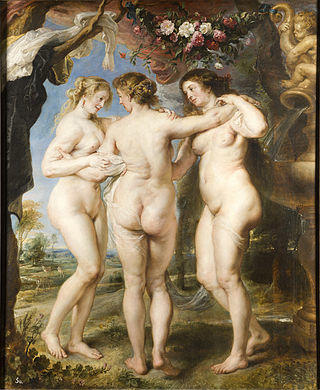
Imagine a world without influence. The kinds of people we'd come across who are inadvertently original and unique, free from any and all corruption. Social settings where conversation is illustrious, common ideas are undeterred by frivolous arguments, no one is swayed, everyone is steadfast. It's the kind of world we want to believe exists where we hold fast onto our beliefs, ideals and morals. We already stand strong in who we are, not just as individuals but as a whole group of people. This is who we are, we say to ourselves. Yet it's the greatest irony of all.
There's been much debate on the role media plays when it comes to influencing our lifestyles. Everything we know about sex, religion, politics and self identification has seemingly found root in entertainment and media. From pornography depicting unrealistic sexual scenarios to popular mainstream magazines telling us what's perfect or not as if we haven't minds of our own. We listen and we obey -- or do we merely adapt?
As a species, we rely on influence as a method of survival. It's our way of identifying with each other and ourselves. Through this, we learn of the things we like or dislike. If we reach deep enough, we just might find the darker sides we'd never dare show anyone else. Unless, of course, we find a mutual friend who shares in our interests. Survival, remember? This, from what I've gathered, has been happening for centuries. In times past, they didn't have social media accounts to post selfies or workout regimens. They didn't have the internet to reach dozens of likeminded people to bond over a singular fetish. They didn't relate over the woes of first world problems via a hashtag system on Instagram or Twitter. What they did have were other sources. Paintings, #fashion magazines, catalogues. These are a few of the influences the world had at a time before the digital age.

c. 1900; illustration of the new and highly coveted S shape [ source ]
Times change and, with it, people. An example is of the corset. First introduced during the medieval 1300's where it was to enhance a woman's figure. It was highly sought after and a sign of wealth. Throughout the years, several changes were made to its design according to the trends of their respective times. From a mere waist cincher to the preferred S shape of the 1900's, it appealed to its audiences by suggesting this is ideal. Everyone knows of women's fashion and the impact it played throughout each century. Constantly changing its shape and conforming to the standards of its time whether religion or society played a part in it. Men's fashion joins women's as it adheres then strips away then adheres again to what society demands.
Clothing, jewelry, hair styles. All have been determined by what society deems appropriate. If anyone of the time dressed differently, they were either condemned or ridiculed. Can we honestly say times were different then? When people's lifestyles and influence had been dictated by society and its counterparts?
In sports, Babe Ruth will always be considered one of baseball's greatest heroes. He was very overweight with an unhealthy lifestyle but he managed to hit them out of the park every time. Not to mention he could easily play every position on the field as well. By today's standards (though he was hardly ideal even during his time), he wouldn't have been given a chance based on weight alone. Superstars like Alex Rodriguez and Yadier Molina are preferred body types in comparison.
Even #sex, though mostly a topic of taboo, had been shaped and molded according to someone's half-lidded perceptions. It was frowned upon in one culture but encouraged in another. Most people were ignorant of what was expected of them during sexual encounters, and men would visit brothel houses to educate themselves before their wedding night. The pornography of the time wasn't at all subtle, but one was considered a deviant if such paraphernalia was found in their possession. High society ladies were especially unlearned in sex and foreplay. Today, it's not much different with more and more people looking to pornography as a means of sexual education.

The Three Graces, 1635, by Peter Paul Rubens [ source ]
What they thought was sexy in the 1500s wasn't merely an accident but an influence from painters and writers. What was considered fashionable in the 1700s had been determined by outlets rooted in art. On and on, throughout the years, society has controlled what people see or don't see. Consider the painting by Rubens, The Three Graces. Finished by 1635, it depicts three voluptuous women who by today's standards would be considered fat. For the time, however, they were ideal. All because one famous painter said so thus creating the sought after Rubenesque shape.
Men, too, have endured the changes of time's societal ideals. In the 1870s, it was preferred for men to be slightly overweight as a sign of wealth and power. However, by the 1930s, a slimmer physique with more muscular definition to the arms was desirable as seen in the photos below. All three actors were considered healthy and would regularly work out to maintain a lean frame. It was what the Hollywood films at the time insinuated was best.

From left to right, Clark Gable, John Wayne and Gregory Peck. Some of Hollywood's macho men of the time, yesterday's actions stars in comparison to today's. [ source ]
Now, in the Digital Age, we have different sources to tell us what is or isn't beautiful. Everybody has preferences but the topic begs the question of whether these are influenced or completely swayed by what we perceive. Is society to blame for the overall issues of esteem and self-worth? We are guilty by association, after all. None of this is new, is my point. We've always been at the mercy of society. If Hollywood or some other influential source were to project images contrary to those we see today, would we change our ideals according to their statements? If "fat" became in style, will most of us agree and adapt unhealthy lifestyles with unbalanced diets just to attain this specific physique? There was a time when Rubenesque female forms were all the rage. Then, with the insurgence of flappers in the 1920s, it was the rather boyish or waifish figure that some women struggled to attain.
What I believe is social media has always has been a great influence. For those suffering with confidence issues, this is even worse. I wonder if our standards are mere ideas implanted in our heads from what others tell us. I wonder if we insist on our preferences as a way of adapting or conforming. What impact has society made on all of us? And is it necessarily a bad thing?
 Holidays
Holidays  Girl's Behavior
Girl's Behavior  Guy's Behavior
Guy's Behavior  Flirting
Flirting  Dating
Dating  Relationships
Relationships  Fashion & Beauty
Fashion & Beauty  Health & Fitness
Health & Fitness  Marriage & Weddings
Marriage & Weddings  Shopping & Gifts
Shopping & Gifts  Technology & Internet
Technology & Internet  Break Up & Divorce
Break Up & Divorce  Education & Career
Education & Career  Entertainment & Arts
Entertainment & Arts  Family & Friends
Family & Friends  Food & Beverage
Food & Beverage  Hobbies & Leisure
Hobbies & Leisure  Other
Other  Religion & Spirituality
Religion & Spirituality  Society & Politics
Society & Politics  Sports
Sports  Travel
Travel  Trending & News
Trending & News
Most Helpful Opinions